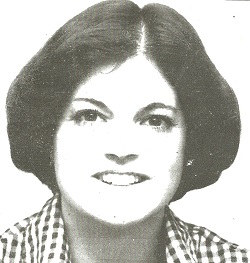Understanding the Difference Between Prescription Fentanyl and Illicit Fentanyl
/By Roger Chriss, PNN Columnist
The opioid overdose crisis is now being driven by fentanyl. But misunderstandings over what fentanyl is, where it comes from, how it is used and why have become so pervasive that they plague discourse and debate about the crisis. News reports about “fentanyl overdose deaths” appear almost daily.
October saw a particularly tragic death. As reported by the Daily Courier in Prescott, Arizona, a 14-year-old high school student died of an overdose after taking what investigators suspect was a counterfeit pill “laced with the potent narcotic painkiller fentanyl.”
The tragedy of this death cannot be overstated. Nor can thousands of other overdose fatalities caused by fentanyl. But the nature of the drug needs to be better understood if we are to prevent such deaths moving forward.
Fentanyl is not one drug. It is better thought of as a family of synthetic opioids that are structurally similar, and includes sufentanil and remifentanil. These are pharmaceutical fentanyls, used clinically as anesthetics and essential for medical procedures such as open heart surgery.
Collectively, these drugs are part of a super-family known as fentanyl analogues. There are dozens of such drugs. Some are compounds developed by pharmaceutical companies for legitimate medical use, and others are manufactured illegally for use as street drugs. These forms of fentanyl are commonly referred to as “illicitly manufactured fentanyl” by government agencies like the CDC. The DEA has classified “fentanyl-related substances” as Schedule I controlled substances, meaning they are illegal to manufacture, distribute or possess.
To make this even more complicated, the fentanyl drug carfentanil is used legally in the U.S. as a tranquilizer for elephants and other large animals. The DEA authorizes production of a minute quantity of carfentanil for veterinarians every year. But illicit carfentanil from overseas occasionally shows up on the street and causes fatal overdoses.
Further muddying matters is the new fentanyl-like street drug isotonitazene, which is known colloquially as “iso.” It is “fentanyl-like” in its risks and harms, but is not technically a fentanyl analogue. “Iso” is instead related to etonitazene. Neither of these drugs has any recognized medical use in humans.
Risks Are Very Different
In other words, there is a vast gulf between pharmaceutical fentanyl and illicitly manufactured fentanyl. The former is a tightly controlled Schedule II prescription medication, approved for use in hospitals and to treat breakthrough cancer pain. The latter is an illegal substance cooked up in illicit labs that is often added to heroin or used to make counterfeit pills, which are then sold on the street or online.
This distinction is critical for understanding the opioid overdose crisis. The risks of a prescription opioid like fentanyl when given for medical use to a legitimate patient are very different from the risks of an illicit opioid being used non-medically by a random street buyer. Importantly, the risks for medical use can be addressed and managed. The risks of illicit use are much harder to deal with and often prove fatal.
The distinction also leads to confusion. The abundance of fentanyl on the street is rarely a result of diversion, and is unrelated to the supply of pharmaceutical fentanyl. These are different drugs, much as the cocaine nasal spray recently approved by the FDA as a local anesthetic is completely separate from the cocaine bought on the street. Pain experts are now pushing for a new classification for illicit fentanyl analogues, in the hope of clarifying this difference.
But fentanyl has so saturated the street drug market that more than a name change will be needed. As Ben Westhoff explains in the book “Fentanyl, Inc.”, preventing future opioid deaths will require “sweeping new public-health initiatives, including treatment programs and campaigns to educate everyone, from users and medical providers to teachers and police, about the drugs’ dangers.”
Understanding the difference between pharmaceutical fentanyl and illicitly manufactured fentanyl is an essential step in the effort to reduce overdose deaths.
Roger Chriss lives with Ehlers Danlos syndrome and is a proud member of the Ehlers-Danlos Society. Roger is a technical consultant in Washington state, where he specializes in mathematics and research.





